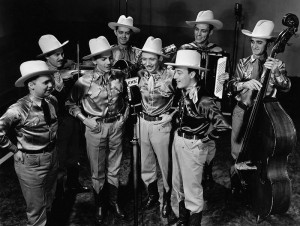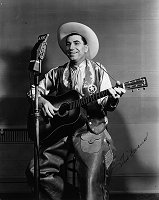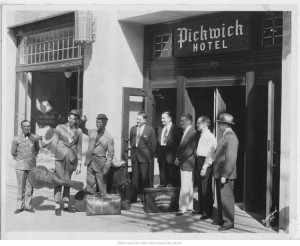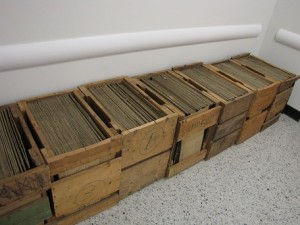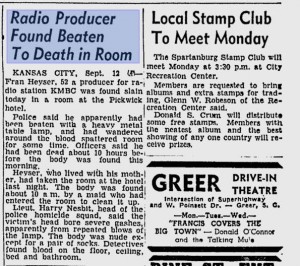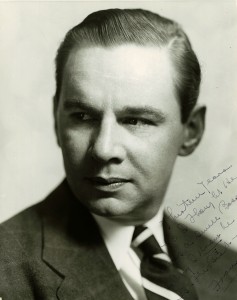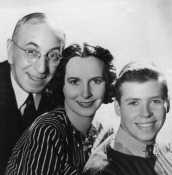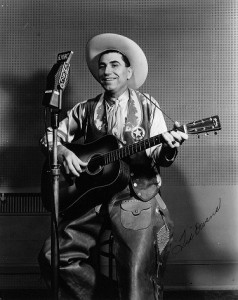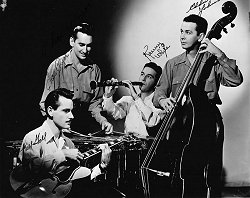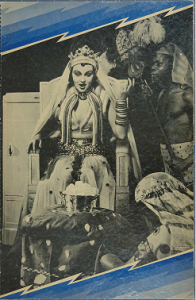 Of the numerous radio programs produced in the 1930s, few seemed to have caused more stress for Arthur B. Church than Phenomenon: Electrifying History. Written by long-time radio personality Ted Malone, this series is one that always proved to be entertaining for the listeners, but fell short of attracting lucrative sponsors.
Of the numerous radio programs produced in the 1930s, few seemed to have caused more stress for Arthur B. Church than Phenomenon: Electrifying History. Written by long-time radio personality Ted Malone, this series is one that always proved to be entertaining for the listeners, but fell short of attracting lucrative sponsors.
After days of listening to the series, a number of us considered Phenomenon a favorite among Church’s productions. It can only be described as a science-fiction historical drama, rife with all the archetypes that make such shows enjoyable. The story follows the adventures of Jerry Powers, your typical man about the world. He has all the character traits of the overly confident hero, always finding a way to get out of a tight spot. Dr. Light is your mad scientist to the townsfolk, but a real genius among his friends and family. Light’s daughter Katherine is naïve but sweet, naturally playing the role of the sheltered damsel. She falls in love—and danger—at the drop of a hat. Then there are comedic caricatures like the stereotypical mobster henchman Slim McGuiness or the always-helpful-but-difficult-to-understand Chinese manservant Charlie Wong.
The dynamic cast of characters is met with an extraordinary invention: Dr. Light’s anachrophone, a device that harnesses radio waves and uses them to propel a person back in time. With the anachrophone Dr. Light hopes to be able to pinpoint time-travel with the intent to find his late wife, but to test the machine he requires the brave services of Jerry. As Jerry travels back through time, he is charged with the mission to persuade historical figures to embrace electricity, thereby changing history for the better. In a typical episode, it is not surprising to find Jerry in the presence of a great ruler urging them to build a power plant in their ancient city. In fact, his salesmanship often produced positive results; in one episode Jerry convinces a number of Founding Fathers to build a telegraph network to help the colonies communicate in case of danger. As a result, they are able to warn each other that the “British are coming” and prepare for battle. Notice how Paul Revere didn’t get the credit for that one? What’s more is that these happy historical moments are often met with cruel twists in the plot as the local Murdoch gang repeatedly attempt to steal Dr. Light’s anachrophone invention and use it to gain power.
It had everything: action, suspense, humor, drama, and romance. Throughout the Phenomenon series we found ourselves interested in the next chapter, emailing summaries to each other so we were ready for the next twist in the plot. And now that it’s over, I must say it’s rather sad we don’t have the final episodes of the original run. What is sadder is that Phenomenon, with all of its time-traveling, has all but disappeared from history.
Phenomenon was originally produced in partnership with KCP&L to advertise electricity. After it became a local success, Church approached World Broadcasting System in early 1932 to record the series. Church pushed for syndication the following year, but the demand was insufficient. In the mid-1930s, it was made clear that KCP&L was satisfied with the original six month run and did not wish to record more episodes. Church, likely frustrated at being snubbed, then tried selling the series to other power companies and radio stations in the Midwest, broadening Phenomenon’s audience.
The series was re-recorded with a Hollywood cast in 1937 and broadcasted to new regions throughout the 1940s. National reviews for the show were mixed. A number of telegraphs to KMBC indicate that audiences enjoyed the series. It was argued that the war in Europe allowed audiences to be more publicly aware of the global locations discussed in the show and were therefore more interested in the story. In spite of the positive reception, those that were in charge of actually purchasing the program were hesitant. One of the reasons, as suggested in a meeting among KMBC executives, was that the power and light companies that were being targeted for the show either weren’t interested or didn’t understand the need for radio advertisements. They were more likely to spend their money on newspaper ads or persuading local government to achieve success rather than use radio.
In 1943 Church’s Chicago-based salesman George Halley suggested in a memo that Church pursue national advertisers for the show and abandon the urge for local power and light sponsorship. It was also suspected—and feared— that Ted Malone was considering selling his idea elsewhere. One can get a sense in the forties that some big changes were needed to salvage the dwindling program. Sadly, the national sponsor that Halley had hoped for was never found and the tangles among the local stations’ executives were never solved. As a result, future episodes of Phenomenon were never recorded. Church’s business records follow Phenomenon until the late forties and then drop like a brick in the wake of Texas Rangers’ national syndication and rapidly growing fame. This program ran for more than ten years, yet all we have left is a treasured collection of episodes and a couple boxes of paperwork that reveal its struggle for success.
Selected episodes and resources from Phenomenon:
• The first episode.
• How electricity was advertised.
• How Jerry Powers played a vital role in the American Revolution.
• For information on electric products advertised on Phenomenon, see Arthur B. Church KMBC Radio Collection, box 1, folder 29 in LaBudde Special Collections.
• The promotional portfolio.
• For transcripts of the conferences on Phenomenon and Church’s plan for the show’s national success, see Arthur B. Church KMBC Radio Collection, box 1, folders 4 and 5 in LaBudde Special Collections.
Christina Tomlinson, KMBC Project staff/History (MA) student
Like this:
Like Loading...
